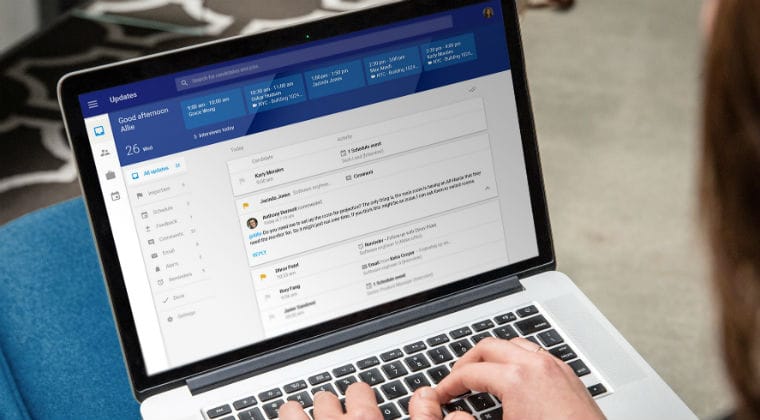Remote work sits at the intersection of many urgent issues that impact how we live and work today.
The demand for flexible work options has been driven by outside factors such as the housing crisis and the rising costs of living across major cities, the growing gig economy, and even longer and increasingly more stressful commutes by car or public transportation.
Meanwhile, advances in technology and cloud capabilities have made it easier for employees to work outside of the traditional office environment. The result is that an estimated 23 percent of the U.S. workforce now works remotely at least part of the time — a number expected to reach 50 percent this year.
With 40 percent of our employee population working virtually, my company, Ultimate Software, set out to study the state of remote work and how this growing trend is impacting the experience of fellow remote and in-office workers alike. We surveyed 1,000 U.S. employees nationwide, all of whom work for a company that has a mix of remote and in-office employees. What we found was quite unexpected.
Counter to the common narrative of remote workers as isolated and overlooked, the majority of them — and, surprisingly, women in particular — seem to be thriving when working outside of the traditional office setting. The data suggest that flexible work options may actually be helping women overcome barriers such as access to career growth and work-life balance.
These findings come at a time when our nation is grappling with important conversations surrounding equal pay, the #MeToo movement and how women are treated in the workplace. It’s important for business leaders and HR teams to pay attention to what women’s experiences tell us about improvements that still need to be made in traditional office settings.
Women Who Work Remotely Are Thriving
The prevailing media narrative around remote workers is that they are isolated, as they often miss out on in-office benefits, including team collaboration, company culture or access to HR. At worst, there’s a myth that remote workers are overlooked when it comes to career growth — out of sight, out of mind. But our survey data paint a different picture, particularly when you compare men’s and women’s experiences.
 For example, our research found that women who work remotely were twice as likely to report proactively leveraging HR to resolve issues, when compared with in-office women. This gap did not exist between in-office men and remote men. Meanwhile, women who work from home were also more likely to feel confident that HR understands their needs and concerns — 67 percent agree or strongly agree that HR is aware of their needs, versus 57 percent of in-office women. Men tended to be even more confident — 73 percent of in-office and 72 percent of remote male workers agree or strongly agree.
For example, our research found that women who work remotely were twice as likely to report proactively leveraging HR to resolve issues, when compared with in-office women. This gap did not exist between in-office men and remote men. Meanwhile, women who work from home were also more likely to feel confident that HR understands their needs and concerns — 67 percent agree or strongly agree that HR is aware of their needs, versus 57 percent of in-office women. Men tended to be even more confident — 73 percent of in-office and 72 percent of remote male workers agree or strongly agree.
This stronger connection with HR could be benefiting remote women workers’ overall career growth. They were the most likely to report a promotion in the last year, eclipsing men in either work environment: 57 percent of remote women reported being promoted in the last year, compared with 35 percent of in-office women, 51 percent of male remote workers, and 43 percent of male in-office workers. These women were also significantly more likely than in-office women to report room for growth in their current roles (80 percent of remote women versus 60 percent of in-office women).
The data also indicated a continued struggle for work-life balance among in-office women in particular. They were significantly more likely to report feeling guilty about taking paid time off than any other group (42 percent of in-office women versus 28 percent of remote women, 21 percent of in-office men and 18 percent of remote men).
Have Workplace Advances Left Women Behind?
A cursory glance at these numbers tells us that remote women workers are reaping valuable benefits. If you dig even deeper into the data, another startling trend emerges. While the reported experiences of remote and in-office women varied vastly when it came to career growth and a connection with HR, men tended to report similar experiences regardless of where they worked.
Also read: Remote Employees: Out of Sight, Out of Their Minds?
In fact, the experiences of remote women were often on par with their male counterparts who worked in the office or at home, while women who work in the office lagged behind all other groups significantly. What the data make clear is that women are feeling disconnected and disadvantaged in traditional office settings.
What is the answer? Should women be working from their home offices and kitchen tables for a better chance of a promotion and supportive work environment? Obviously, this is not the solution.
It’s not women who work in traditional office settings who should be paying attention to this data — it’s the people who lead and manage them. It’s evident that, while significant advances have been made to improve the work experiences of all employees, there is still work to be done.
How Leaders Can Make a Difference
While these issues may not exist in the same form at every company, these findings can serve as a starting point for HR leaders and business executives to take a closer look at their own companies. Real change begins by asking the right questions, and these stats provide a script.
Ask yourself: How are remote workers performing relative to in-office workers at your company? Are there significant gender gaps? The answers can be quantitative or anecdotal. Look for patterns in who’s accessing HR and training opportunities, who’s getting promoted — and who isn’t — and then ask why.
Once you’ve turned inward and asked some honest questions about your workplace, the next and most important step is to ask for feedback — and then keep asking. Gather feedback from employees in a safe, supportive way, and then encourage open dialogue. Various methods may work best for your organization, from mentorship and manager one-on-one meetings to employee surveys to creating a diversity and inclusion committee.
Regardless of whether your company has a remote workforce now, the ways in which we work are changing. Employee expectations are also changing.
Leadership has a particular responsibility to ensure a company weathers these changes by supporting all employees. A workplace revolution is coming. In many ways, it’s already started. Leadership must look inward to ensure their company is on the right side of that shift.





 According to the Kronos website, other Workforce Dimensions partners include financial wellness provider Branch, Cornerstone Learning and work opportunity tax credit processor HireCredit.
According to the Kronos website, other Workforce Dimensions partners include financial wellness provider Branch, Cornerstone Learning and work opportunity tax credit processor HireCredit.










 “Not only are you having desk and wall colors and furnishings go into this more serene setting, but you’re having tech companies do this with their products as well,” she said. “They’re going into a lot more beiges and a lot more soft corals, mints and blues, even into the actual technology to give that overall feel.”
“Not only are you having desk and wall colors and furnishings go into this more serene setting, but you’re having tech companies do this with their products as well,” she said. “They’re going into a lot more beiges and a lot more soft corals, mints and blues, even into the actual technology to give that overall feel.”